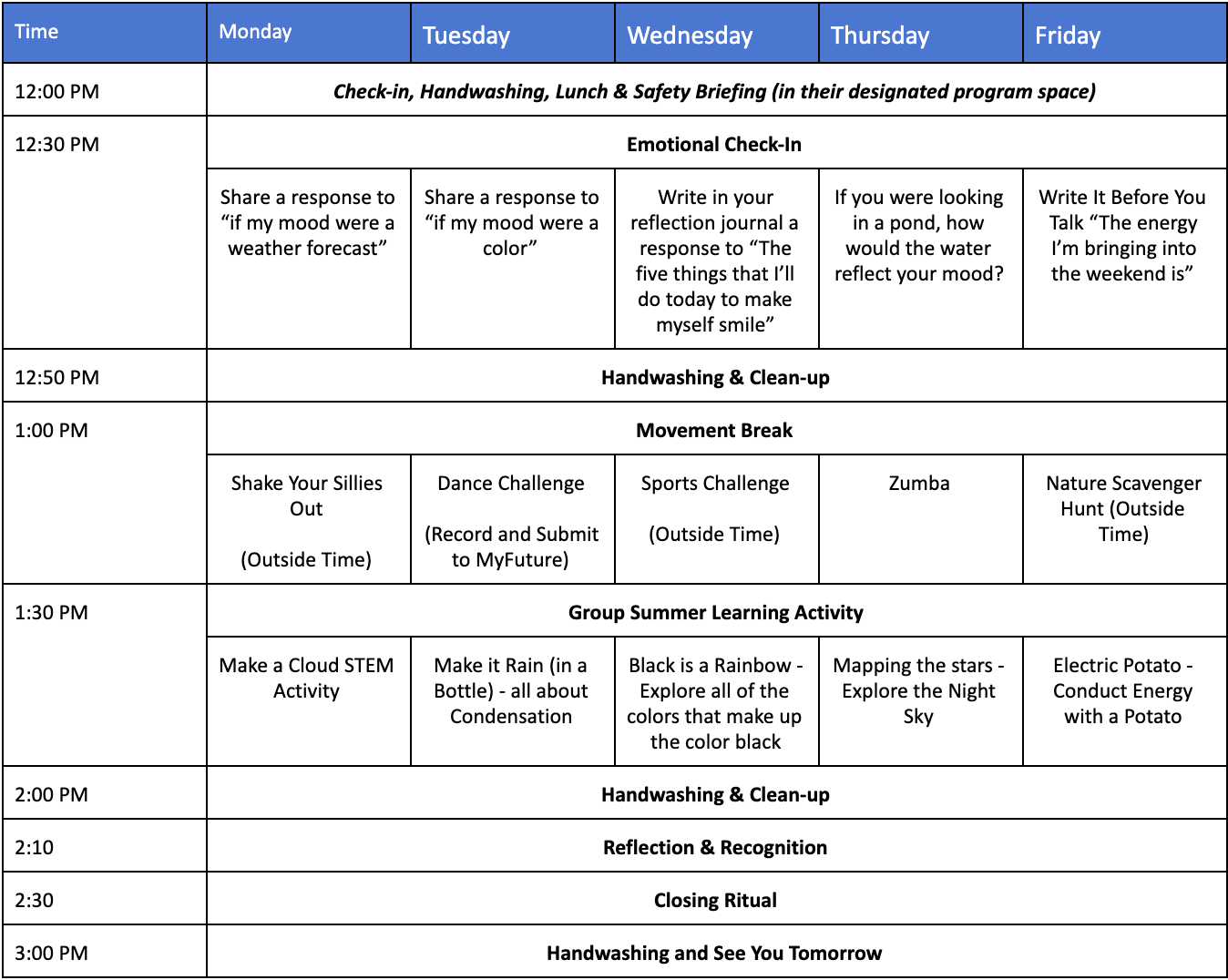Program Quality
COVID-19 has presented challenges that Clubs have never faced before, which makes planning for program quality much more important. Planning helps ensure the physical and emotional safety of youth and staff, and addresses the potential gaps caused by disruptions to the academic year.
BGCML will continue to focus on the Continuous Quality Improvement Process for both virtual and in-person programs. This includes:
Assess: Understand the needs of our youth and make data-driven and informed decisions about our programming
Plan: Understand the fundamental, practical how-to of programming, which include program plans and schedules
Improve: Understand what works, doesn’t work, and what you might need to change to provide a high-quality Club experience. Additionally, take the time to improve staff practices through professional development opportunities.
BUILDING BLOCKS OF PROGRAMS
Warm Welcome
Greet youth formally
Facilitate an emotional check-in (see BGCA’s “Emotional Wellness Discussion Guides”)
Display and review the session agenda and identify what youth will need to participate
Group Agreement
Establish group norms that set expectations about behavior and how to participate
Invite youth to either facilitate or participate in the development of group agreements
Encourage youth to add to agreements
Routinely review agreements to make sure everyone understands them and update them as needed
Post them prominently around the room as reminders
Community Builders and Emotional Check-Ins
Plan for and incorporate emotional check-ins and community builders into your programming schedule routinely
Refer to the emotional safety/wellness section of BGCA’s Program Basics guide
Spread emotional check-ins throughout the week
Use different themes to facilitate youth identifying and expressing emotions (ie find an emoji that reflects how you feel,)
Name the specific social emotional or other skill youth will be working on
Main Activity
Incorporate themes in your weekly program schedule to encourage engagement
Provide opportunities for a tangible product to be created as a result of each Main Activity
Reflection
Connect each activity with an opportunity for youth to reflect on what they’ve just learned or practiced during the main activity
Consider using pulse checks to capture youth feedback with online polls like Kahoot and other methods
Closing and Check Out
Ending a session with warmth and clarity is important to ensure clear expectations as youth move onto their next activity
Even though groups may be staying in the same physical space, there should still be a closing that functions as a transition to the next activity.
Sample Program Schedule
The following sample program schedule is an abridged version of an example in BGCA’s Program Basics for COVID-19, and reflects social distancing recommendations found in BGCAs Social Distancing in the Club. Times have been adjusted to reflect program hours at Boys & Girls Club of the Muskegon Lakeshore.
Youth Ages: 10+ (Group A)
Youth Population: Non-Essential Worker Children
Theme: Weather & Energy

